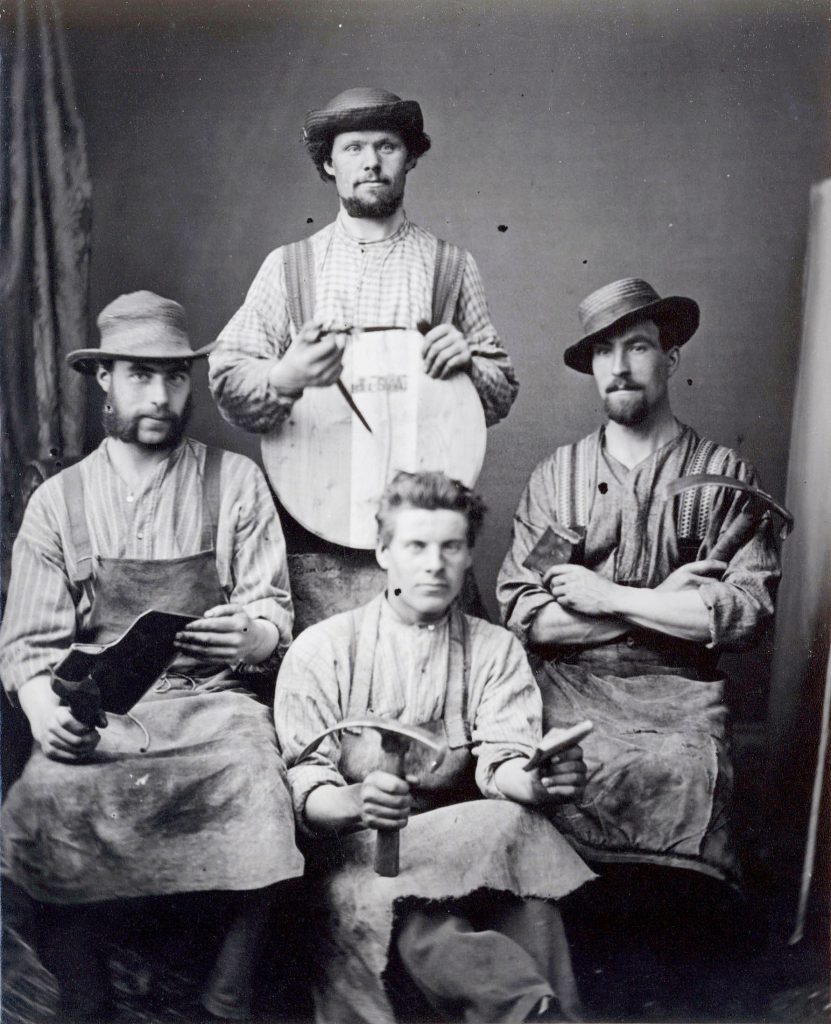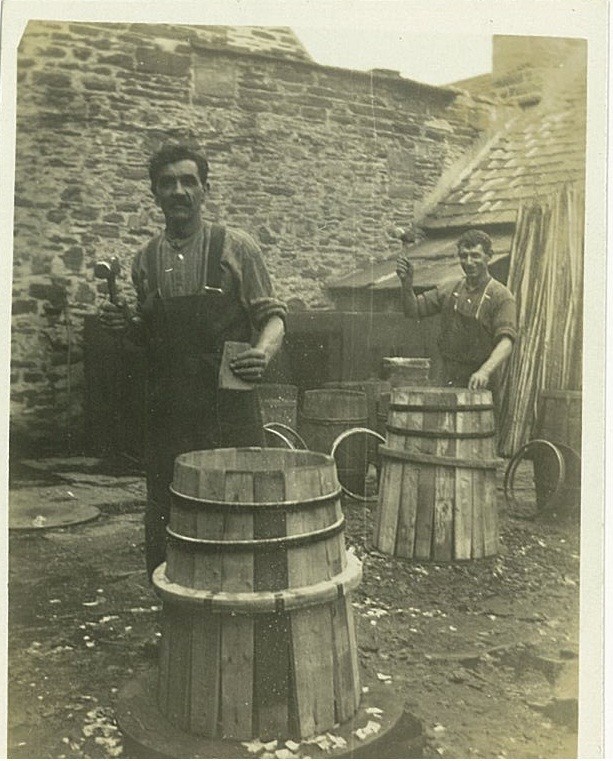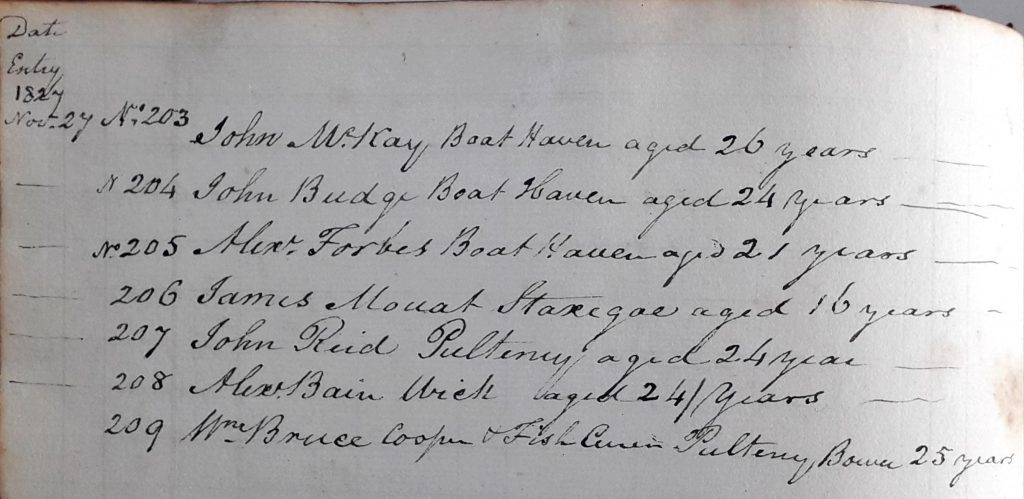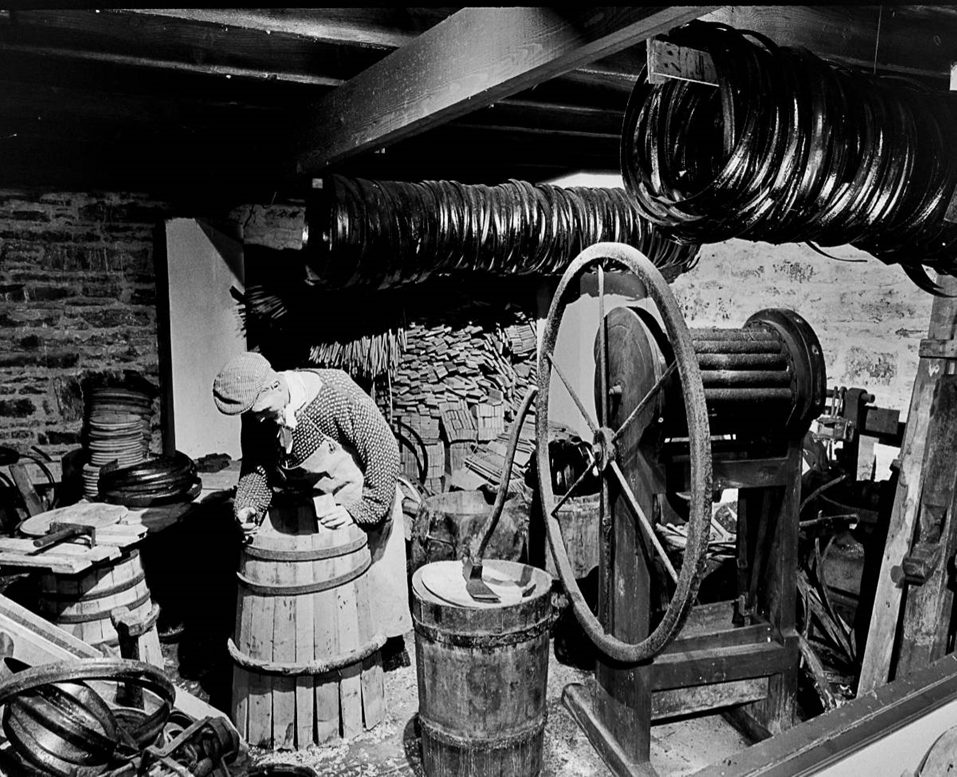The second phase of the Highland Clearances (1815-1820) saw overcrowded crofting communities unable to support themselves and a marked shift in the labour force towards the booming herring trade.
As well as fishermen the industry needed coopers to make the fish barrels, herring gutters to fill the barrels, sail makers, rope makers, boat builders and net makers. Hence a thriving industry developed in Wick.
By 1875 there were around 650 coopers in Wick constructing over 120,000 barrels a year for the fresh herring to be packed in. This was after they’d had the “Scotch-Cure”; gutting and packing in salt after the fish were landed. No salt was allowed to touch the fish on board the boat.
As far back as 1790 Scottish civil engineer Thomas Telford recommended to the British Fisheries Directors that they should improve the natural harbour at Wick as he could see the potential. Even without this organisation Wick was prosperous with a Parish population of around 5000. Wick alone had a population of around 1000 which included 50 coopers and 9 or 10 shipmasters.
The Brotherly Society of Coopers
The Brotherly Society of Coopers was started in 1817 to gather subscriptions from members which were later used to help widows, widowers and the elderly pay for funerals. Expenses of the Society were also covered to enable group meetings.
The Society gathered around £316 per year from its members. This equates to approximately £40,000 today. Names of members can be found within the minute books of the society.
Outgoings were in the region of £54 or £7,000 per year. Members were between the ages of 16 and 35 years old and paid subscription amounts according to age.
The Society was also able to purchase bulk loads of coal or meal to sell to members and dependants.




